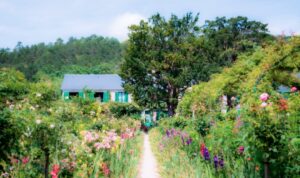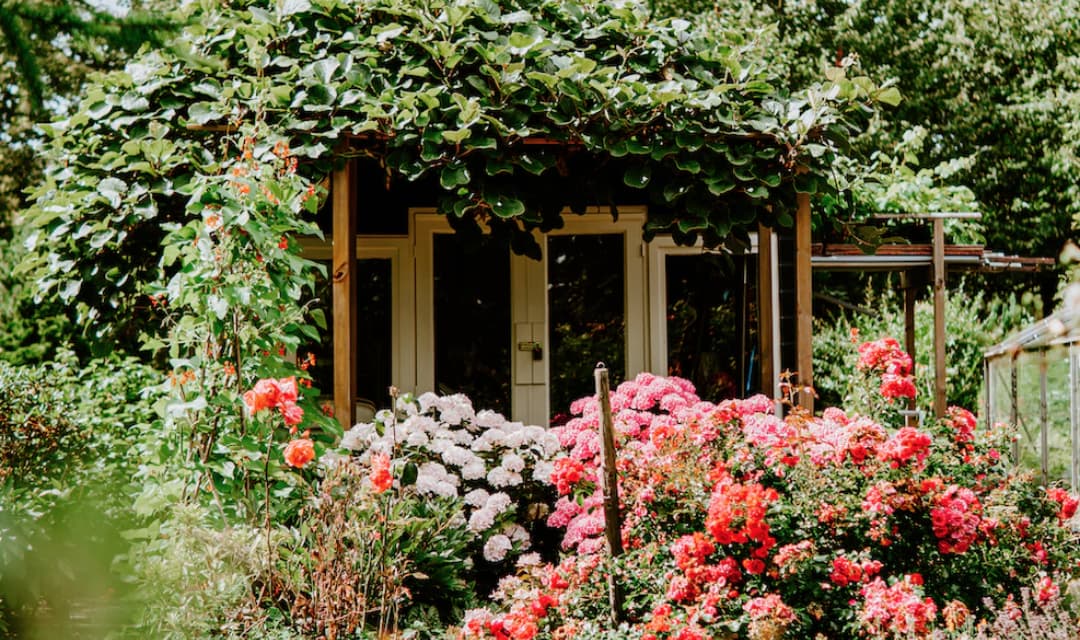Your yard can be a place of solace. It can be where you and your loved ones gather to enjoy hot summer nights and breezy autumn afternoons. It can be where you take deep breaths of fresh air and get your hands dirty gardening. It can also be a space that goes completely unused despite how much everyone keeps telling you that getting outside is good for your health. The following will explore a few simple tweaks you can make to your outdoor space to help cultivate an environment that is inviting no matter the season.
Flowers Are Nature’s Decorations
You knew this was, was going to be on the list, right? Nothing makes for better decor than lush, vibrant plants. A feast for the eyes, floral arrangements can also help fill the air with sweet perfume and imbue your outdoor space with life. When it comes to flora and fauna in your yard, you can organize things so that there’s beauty all year round. You want to choose plants that are at their brightest during each of the seasons and mix them together in your beds to help ensure that you have color all year round. It’s also a good idea to look out for native plant species whenever possible as native plants know how to thrive in your particular climate. This can radically reduce the amount of maintenance required to keep everything abundant and will also help support local wildlife like butterflies that add fairy-tale-like charm to your yard.
Bird Houses
Besides flowers, another way to amp up the Disney princess vibe of your space is to set out bird feeders. Even if you live somewhere that becomes frigid and snow-covered in the winter, there are going to be some bird species that stick around. Having a regularly-filled and properly maintained bird feeder or bird house can help call songbirds to your yard, adding endless charm. If you do your research before selecting the house and the feed, you can even make choices that attract certain kinds of birds.

Embrace Cottagecore Rules
English country gardens are pretty spectacular. There’s a casual, nonchalance to them that would make even the most relaxed Parisian fashionista feel like there was more loosening up to be done. Consider incorporating a classic English stone path between key places and letting the rest grow deliciously. Don’t forget the climbing vines and roses! The best part about this style of garden is that it doesn’t require a ton of maintenance. Focus on perennial plants that come back every year and plants that help each other thrive like dynamic accumulators to help ensure your garden is easy to care for in years to come. Any garden adjustment that looks horrible if it’s not maintained for five minutes should be skipped over. You have no way of knowing what sort of time commitments and obligations are going to exist in the future, so take steps now to minimize the work needed. If you play your cards right, you might even be able to get away with not having a lawn to mow (hello, ground covering, flowering plants).
Food Forest Elements
The food forest movement is just a wee baby right now, but that won’t be the case forever. Food forestry involves planting perennial plants that support each other and provide years worth of healthy produce for you and your family (and your friends, because you’re going to end up with more than you can eat). The staple of food forestry is fruit trees and flowers; look for flowers that are edible for bonus points (fresh flower tea is a magical experience that takes almost no time at all; just pluck a few blossoms and steep them in hot water). Not only will your outdoor space look gorgeous, but it will also help save you money and stay healthy by providing vibrant, juicy produce.

Garden Furniture
Find a few comfortable pieces that you wouldn’t mind spending an afternoon lounging on. For some people, a hammock is a perfect addition to their garden; for others, garden furniture made of teak is where it’s at. Make sure to test out how comfortable something is before you include it. If it’s not a cozy seat, you’re not going to end up using it too much. Get enough furniture and side tables that you and your favorite folks can all hang out in this backyard wonderland you’re creating.
Ornamental Grass
One of the easiest ways to create texture and height in your garden space is to include patches of ornamental grasses. You can find grasses of all heights and colors like violet, blue, and ochre. Many ornamental types of grass have year-round appeal because they don’t lose their luster between seasons.
Fire Pit
Another fantastic way to expand your use of the yard throughout the seasons is by including a fire pit. In early spring and late fall, when it’s a little too chilly to be outside for long, a fire pit can make all the difference. Gathering around an open fire is one of the most soothing activities there is for people, and maybe that’s because our ancient ancestors associated fire with safety in numbers, storytelling, heat, and cooked food; basically, being near a fire tells our DNA that things are well and we can relax. Just be sure to follow burn regulations in your area and always have the appropriate safety equipment on hand to deal with any flames that get out of hand. Be sure to give any children nearby a safety talk about fire.
Err On The Side Of Variety
If you’re having trouble choosing between different types of plants, get both. Nature works by diversifying her efforts, and your garden space should be no exception. If you have only two or three types of plants and you have a bad year for those plants because of water levels or temperature changes, your whole garden is done for. If you have smaller bundles of twenty different plants, there’s a decent chance some of them are going to make it through whatever the seasons throw at them.
The above information should have given you a few ideas of ways you can make your outdoor space welcoming and cozy no matter the season. Take your time when selecting garden elements and features and accept that working with nature means things are going to take some time. Don’t be alarmed if it takes a full year for you to be pleased with your arrangements as you study the outcome of your work in each season.

